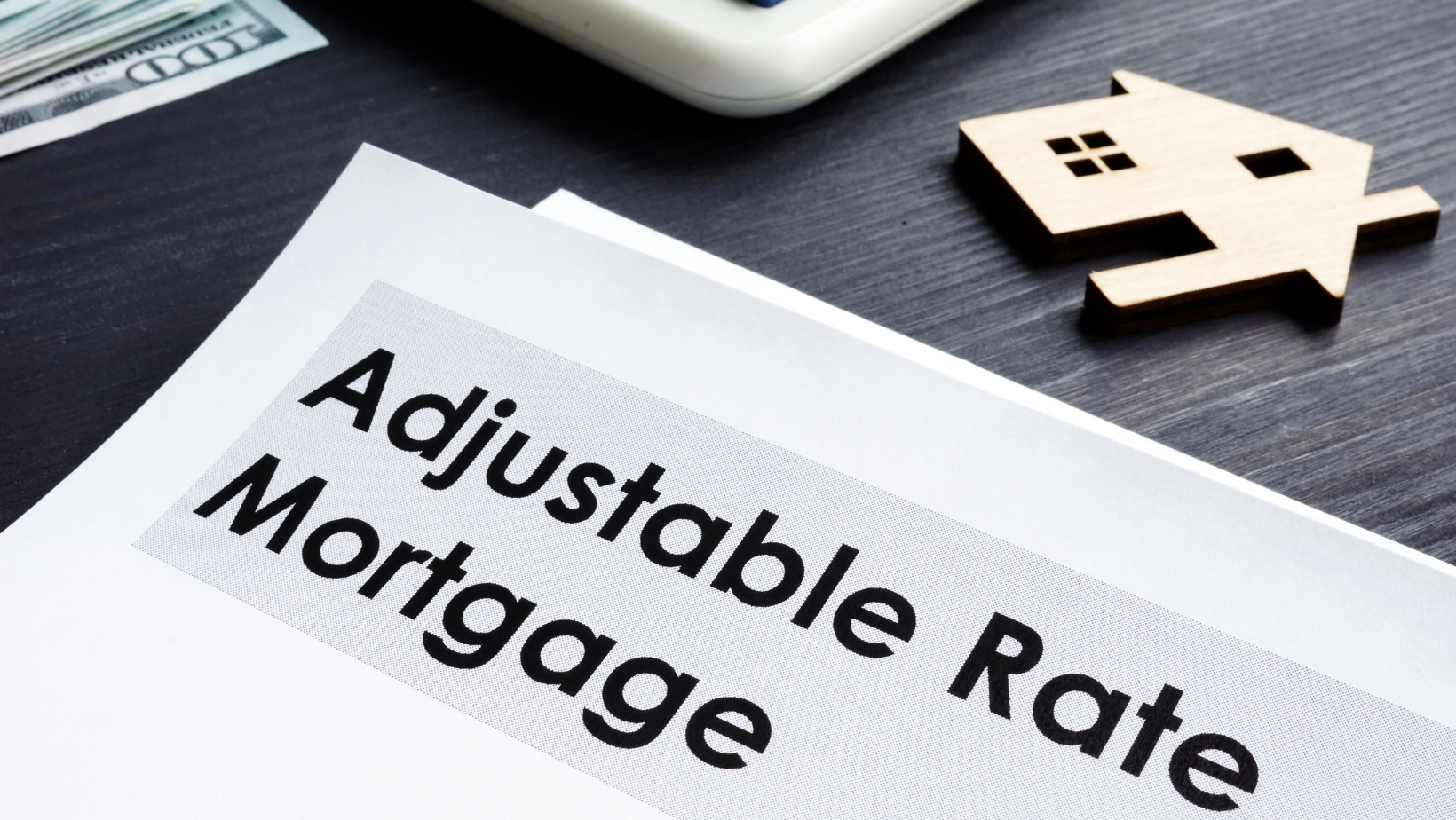Adjustable Rate Mortgages In DC
Hedge against high interest rates, or future nightmare?
Our Tragic ARM Fail Stories
It should be noted that, while real estate agents must have a solid working knowledge of loan types and stay up to date on rates and financial market conditions, we’re not loan officers. Seek out the advice of an objective mortgage loan professional–preferably someone with experience with higher interest rates and the market conditions that surround them–for expert counsel. If you don’t know any, we’ll share some at the end of this post.
ARMs In The Wrong Hands
If you have to ask the price, you can’t afford it.
Remember that quote by JP Morgan? It’s a little bit like that with particular ARM loans; the trickier ones. If you’re not well- schooled in the way ARMs work, you might want to opt for a more traditional loan type. And if you’re already worrying about your ability to make the payments on a home before you’ve even contracted on one, you should step back, reassess your financial situation and reconsider the price range of the homes you’re shopping for. Your home is supposed to be a refuge, not a financial prison!
So at this point in an ARM conversation, we ask: “Are you comfortable with the worst case scenario here? Have you done that math? Has your loan officer checked that math?”
Now, many of our clients are very financially savvy–but I still ask that question. One of my favorite investors recently called me for a gut check on something, and said “You’re my security blanket!” I was flattered, because he’s way smarter than I am, but also because it means I’m doing my job. Our clients are extended family, so we ‘mother hen’ a bit, but in the end, we don’t stick Momagent’s nose into your personal financials. That’s between you and your loan officer. We just want to make sure you’re having that discussion.
Here are some factors that could hinder a successful outcome with an ARM loan, borrowed in part from The Mortgage Professor, who gives an excellent layman’s explanation of all things ARM. This is an amazing resource provided by Jack M. Guttentag, Professor of Finance Emeritus at the Wharton School of the University of Pennsylvania.

A Different Kind Of ARMS Race
When interest rates hit 6.5%, home buyers raced to obtain adjustable rate mortgages before they rose again. But ARMs are not always the best strategy.
- In a stable interest rate environment, determine if the cost savings realized on an ARM is worth the risk by assessing what would happen to the rate on the ARM if the index value jumped to 100% immediately after the loan closed. That’s almost your “worst case scenario.” The worst case is that the market crashes and the value of your property plummets at the same time and you’ve suddenly got negative equity to boot. Now, the likelihood of this actually occurring (again) is very low, but most of us lived through a nightmare scenario in the not-so-distant past, so never say never. The rule for determining future rates on a worst case scenario is that at each rate adjustment the new rate is the lower of a) the previous rate plus the rate increase adjustment cap, and b) the maximum allowable rate.
* A 1Y/1Y ARM has an initial rate of 6%, an adjustment cap of 1% and a maximum rate of 11%. The rate on a worst case scenario would be 6% in year 1, 7% in year 2, 8% in year 3, 9% in year 4, 10% in year 5, and 11% in years 6 and thereafter.
* A 5Y/5Y ARM has an initial rate of 7%, no adjustment cap, and a maximum rate of 12%. The rate on a worst case scenario would be 7% for the first 5 years and 12% thereafter.
* A 7Y/1Y ARM has an initial rate of 7%, an adjustment cap of 2%, and no ceiling. The rate on a worst case scenario would be 7% for the first 7 years, 9% in year 8, 11% in year 9, 13% in year 10, etc., the 2% annual increases continuing for the remaining life of the mortgage.
Use the calculator Mortgage Payments on Adjustable-Rate Mortgages to compute how the interest rate and monthly payments will change on an adjustable rate mortgage under no-change, worst case, and a variety of other interest rate scenarios. This calculator applies only to ARMs that do not permit negative amortization. “What’s that again,” you ask?
Negative Amortization on ARMs
On most ARMs, whenever the interest rate changes the mortgage payment changes by the amount needed to pay off the loan fully at term. The new payment is said to be “fully amortizing.” There are some ARM contracts, though, which allow the payment to be less than fully amortizing, even to fall short of covering the interest. When the payment is less than the interest, the difference is added to the loan balance and is referred to as “negative amortization”.
Negative amortization can occur with ARMs carrying any of these features:
Low initial payments: Some ARMs set the initial payment below the interest payment, generating negative amortization
Rate adjustments with higher frequency rate than payment adjustments: If the rate adjusts every year but the payment adjusts every 5 years, large rate increases will lead to negative amortization.
Payment adjustment caps in lieu of rate adjustment caps: Payment adjustment caps limit the size of the change in payment, regardless of the size of the change in rate–so a large rate increase will result in negative amortization.
The Mortgage Prof says: “In 2001, the most important ARM with the potential for negative amortization was the monthly adjustable with annual payment adjustments. There was no rate adjustment caps but there was a rate maximum, and the annual payment adjustments were capped at 7.5%.
For example, I looked at a monthly adjustable with an initial interest rate of 7.75% and a maximum rate of 12%. If markets rates exploded the month after this loan was closed, the rate would rise to 12% immediately, but the payment would not change for another 11 months, and then only by 7.5%. The payment would fail to cover the interest for 6 years, with the loan balance rising to 109% of its original value before it started to come down.
During the 2003-2007 housing bubble, negative amortization ARMs programs that allowed the borrower discretion over the size of the payment (“option ARMs”), became very popular. Post crash, these Adjustable Rate Mortgages With Flexible Payments. along with all other negative amortization ARMs had disappeared.”
Ask Yourself
- Do I have 3-6 months of reserves to cover rising mortgage payments at the ‘worst case scenario’ rate
- Am I crystal clear on the different types of ARM loans, their pros and cons, and which best suits my situation (if any)
- Am I a first-time buyer with limited resources using the ARM to qualify for a bigger loan and feeling the initial payment is already a stretch
- Do I know I’ll have a job in the same industry, at the same or higher income, throughout the loan term
- Am I using optimism as a strategy
- Am I doing my due diligence?
ARM Program Explanation
By Michelle Davis, Regional Mortgage Manager, Prosperity Home Mortgage
Provided by Michelle Davis, Regional Mortgage Manager, Prosperity Home Mortgage.
This example is for a 7 or 10 year ARM:
The ARM is fixed for the first 10 years, then the rate will adjust every 6 months thereafter. It is tied to the 30 day average of SOFR (Secured Overnight Financing Rate). Whatever the SOFR is on the date of the adjustment plus a margin of 3% rounded up to the nearest eighth will be the rate for the next six months. Then it will adjust again in the same way 6 months later, and so on. In the first adjustment, the rate cannot increase more than 2%, and subsequent adjustments not more than 1%. There is a max increase for the life of the loan of 5% (over the start rate.)
The gamble is where the SOFR rate will be in 10 years, and if there is an opportunity to refinance to a lower 30 year fixed loan rate prior to that.

